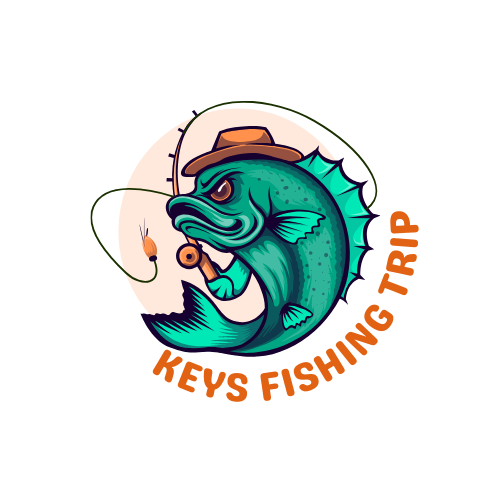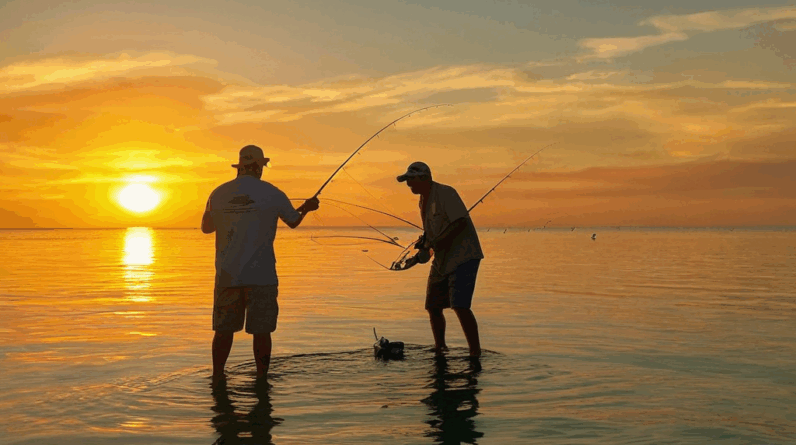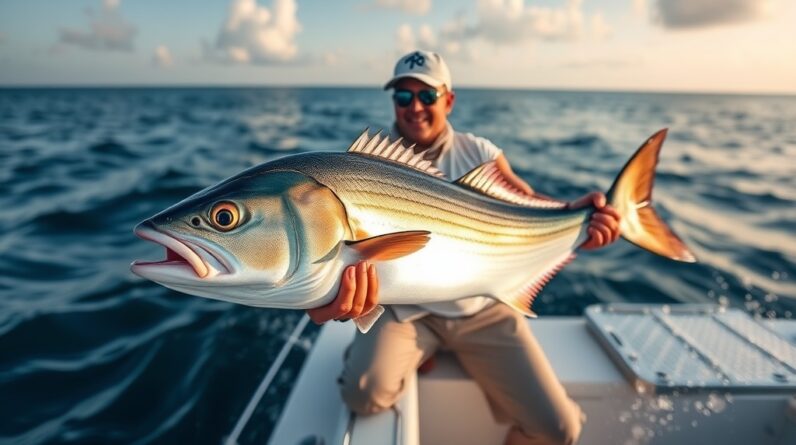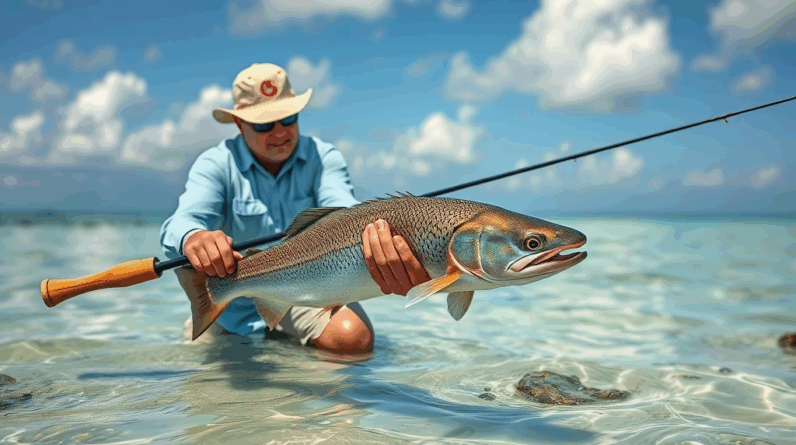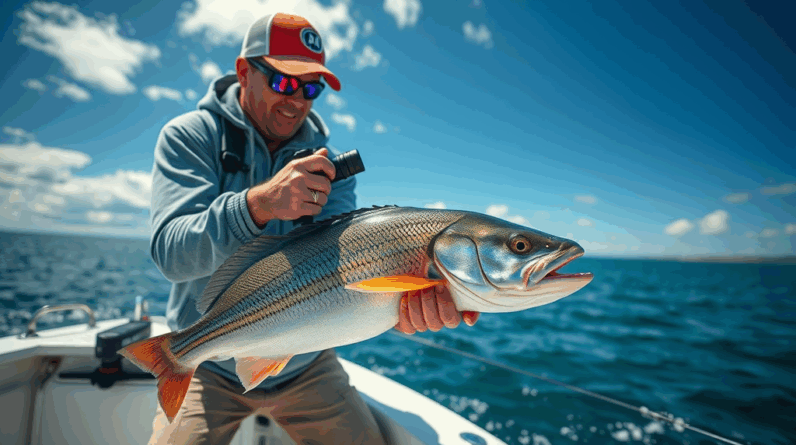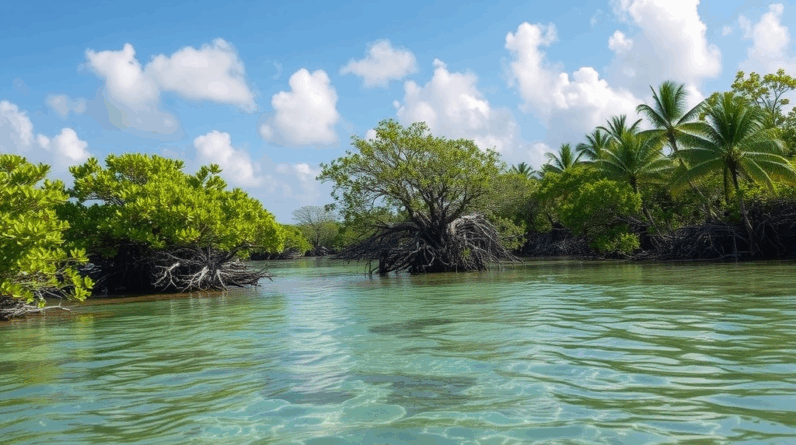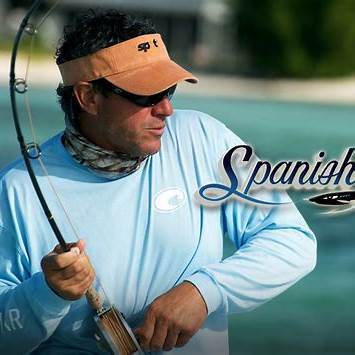
Table of Contents
The Science Behind the Bite: Understanding Feeding Mechanisms of Popular Fish Species in the Keys
The Florida Keys are not just a paradise for tourists and snorkelers; they are also a vibrant habitat for various fish species, each with unique feeding mechanisms that tell us about their behavior and biology. Understanding how these fish adapt their feeding strategies can enhance our appreciation of these aquatic communities and benefit fishing enthusiasts aiming to hook the next big catch.
The Role of Teeth and Jaw Structure
Many popular fish species in the Keys, such as Barracuda and Snapper, possess specialized teeth and jaw structures that allow them to effectively capture and consume prey. For instance:
- Barracuda: Known for their razor-sharp teeth, Barracudas rely on their speed and agility to ambush smaller fish. Their elongated jaws open wide to secure a firm grip on their prey.
- Snapper: Snappers have strong, conical teeth adapted for crushing hard-shelled organisms like crustaceans and mollusks. Their powerful jaws allow them to exert the necessary force to break through such defenses.
- Grouper: Groupers feature a unique jaw mechanism that allows them to suck in prey whole. Their mouths are large and often act as a vacuum, pulling in unsuspecting fish or crustaceans hiding in reefs.
Feeding Strategies and Habitats
The feeding strategies of these fish are closely linked to their habitats. For example, the diverse ecosystems of coral reefs and seagrass beds in the Keys support various feeding habits:
- Ambush Predators: Fish like Barracuda lie in wait, using their camouflage to blend with the reef, striking with lightning speed when prey approaches.
- Foragers: Parrotfish nibble on coral and algae, using their beak-like teeth to scrape food off surfaces. This grazing behavior helps maintain healthy coral reefs.
- Plankton Feeders: Fish such as the Bluegill consume tiny plankton; their specialized filtration systems enable them to take in large amounts of water while trapping minute food particles.
Behavioral Adaptations to Feeding
Beyond physical traits, the feeding behaviors of fish in the Keys are fascinating. Many species display social feeding behaviors, where they cooperate or compete for food:
- Schooling</: Many smaller fish, such as Silversides, swim in schools. This not only offers protection but also helps them coordinate feeding, making it easier to consume plankton in large quantities.
- Territoriality: Some species, like the Lionfish, are highly territorial and fiercely guard their feeding grounds, ensuring access to a reliable food source.
- Mimicry: Certain fish, such as the Cleaner Wrasse, exhibit mutualistic behaviors, cleaning parasites off larger fish in exchange for protection and food.
The Impact of Environmental Factors
The Florida Keys’ environment plays a pivotal role in the feeding habits of its fish species. Factors such as water temperature, salinity, and the availability of prey influence fish behavior dramatically.
For instance, warmer waters often lead to an influx of zooplankton. This increase provides ample food for fish species that rely on these tiny organisms, creating a vibrant feeding frenzy in the ecosystem. Conversely, pollution and overfishing can drastically decrease prey numbers, which can disrupt the feeding habits of many species, leading to unexpected shifts in behavior or population dynamics.
Conservation and Sustainable Practices
Understanding the feeding mechanisms and behaviors of fish species in the Florida Keys is crucial for effective conservation efforts. By recognizing how these fish interact with their environment and each other, we can develop sustainable fishing practices that protect fish populations and their habitats.
Promoting responsible fishing techniques, establishing marine protected areas, and enforcing regulations can help maintain the rich biodiversity of the Florida Keys’ underwater ecosystems. As an angler or a marine enthusiast, you can play an important role in safeguarding these habitats while enjoying the unique experience that the Keys have to offer.
Exploring the science behind the bite not only enhances our fishing experiences but also deepens our respect for the intricate web of life found in the crystal-clear waters of the Florida Keys.
The Impact of Water Temperature on Fish Behavior and Habitats
Water temperature plays a crucial role in determining the behavior and habitats of fish. In the warm waters of the Keys, these factors influence not only where fish thrive but also how they respond to their environment. Understanding the impact of temperature on fish behavior can enhance your fishing experience and deepen your appreciation for marine life.
Fish are ectothermic animals, meaning their body temperature matches that of their surroundings. This creates a close relationship between water temperature and fish metabolism. As the temperature rises, so does their metabolic rate. This can lead to increased feeding activity and aggressive behavior in many species, making them more likely to bite.
When water temperatures rise past the comfortable range for certain species, it can create stress. For instance, fish like grouper prefer a temperature range between 74°F and 82°F. When temperatures exceed this range, you might notice grouper moving to deeper waters where the temperature is cooler. This change in habitat is crucial for their survival as they seek out environments that provide the comfort they need to thrive.
Conversely, when temperatures drop, fish may become lethargic. Species such as tarpon, accustomed to warmth, may become less active when the water cools down. This can lead to decreased feeding and a shift in location toward shallower waters where the sun might warm the environment more rapidly. This behavior changes can significantly affect fishing patterns, particularly in transitional seasons.
Understanding the thermal preferences of popular fish species in the Keys can be beneficial for anglers. Here’s a list of some common species and their preferred temperature ranges:
- Grouper: 74°F – 82°F
- Snapper: 70°F – 80°F
- Tarpon: 74°F – 86°F
- Bonefish: 70°F – 80°F
- Permit: 75°F – 83°F
When temperatures shift, fish also alter their feeding habits. Higher temperatures can increase the availability of prey, leading to more aggressive feeding behavior. In contrast, cooler water can cause fish to conserve energy, making them less likely to chase after bait. Knowing these patterns can help you choose the right bait and tactics for a successful day on the water.
The timing of your fishing trips can also be affected by water temperature. Mornings and evenings may provide the best opportunities, especially during warmer months. As the sun rises, water temperatures often settle into optimal ranges, prompting fish to be more active. On the flip side, during the peak heat of the day, fish might retreat to cooler depths or shaded areas, making them harder to catch.
Temperature fluctuations can also have a role in spawning behaviors of various species. Many fish time their breeding season with specific temperature ranges, ensuring optimal conditions for their eggs to hatch. For instance, tarpon typically spawn in warmer months when waters are consistently warm. Understanding these seasonal behaviors can improve your chances of encountering fish during their spawning activities, which can often lead to more intense feeding frenzies.
In addition to these biological factors, local ecosystems can also be heavily influenced by water temperature changes. Coral reefs, in particular, are sensitive to thermal shifts. When water temperatures rise significantly, coral bleaching can occur, affecting the entire marine food web. Many fish species depend on healthy reefs for shelter and food. Therefore, changes in temperature not only impact individual fish behavior but can also lead to broader ecological consequences.
To wrap it up, water temperature is an essential factor affecting the biology and behavior of fish in the Keys. From influencing their feeding patterns and habitat choices to impacting reproductive cycles, temperature is a key element for anglers to consider. By understanding these dynamics, you can improve your fishing success and support the sustainability of the marine environment.
Whether you are casting from a boat, the shore, or a kayak, being in tune with the water temperature and its effects on fish can elevate your fishing adventures. So next time you head out, take a moment to reflect on how water temperature shapes the underwater world around you!
Common Fishing Techniques and Their Effects on Target Fish Populations
Fishing is not just a pastime; it profoundly impacts our aquatic ecosystems. Understanding common fishing techniques and their effects on target fish populations is essential for both anglers and conservationists. Here’s a closer look at some prevalent methods and how they influence the balance of our waters.
Rod and Reel
The rod and reel method is one of the most popular techniques for catching fish. This approach allows for a more selective catch, which can help maintain a healthy fish population. Here are some key aspects:
- Targeted Species: Anglers can choose specific species to catch, such as bass or trout.
- Catch and Release: Many anglers practice catch and release, which helps sustain fish populations.
- Gear Types: Varying types of rods, reels, and bait allow for different styles of fishing, further enhancing selectivity.
However, if not managed properly, rod and reel fishing can still lead to overfishing, particularly in areas with high angler traffic.
Net Fishing
Net fishing, which includes techniques like gillnetting and trawling, is another common practice. While it is effective for catching large quantities of fish, it poses significant risks to fish populations:
- Bycatch: Non-target species are often caught unintentionally, leading to declines in their populations.
- Habitat Damage: Some netting methods disturb the seabed, affecting habitats important for various fish species.
- Stock Depletion: Trawling, especially, can lead to the rapid depletion of fish stocks, threatening local ecosystems.
Spearfishing
Spearfishing is a more traditional and focused fishing technique. Using a spear or a Hawaiian sling, anglers hunt fish underwater. Here’s what makes spearfishing unique:
- Precision: Targeting specific fish can prevent overfishing of less abundant species.
- Marine Life Awareness: Spearfishers often develop a deep understanding of fish behavior and habitat.
- Low Impact: This method has minimal disturbance on other marine life and habitats compared to net fishing.
While efficient for certain species, it requires skill and knowledge of local regulations to avoid negatively impacting vulnerable populations.
Fly Fishing
Fly fishing is not only an art but also a method of catching fish that emphasizes patient and precise techniques. Here’s how it impacts fish populations:
- Selective Catching: Fly fishermen often specifically target species like trout and salmon, promoting a sustainable approach.
- Low Mortality Rates: The soft tackle used in fly fishing tends to reduce damage to fish, supporting catch and release practices.
- Environmental Education: Fly anglers frequently advocate for conservation efforts, enhancing awareness of fish populations.
Factors Influencing Fish Populations
Different fishing methods interact with fish populations in various ways. Factors that influence how these techniques affect fish include:
- Regulations: Local fishing laws dictate catch limits, size restrictions, and closed seasons, thus protecting fish populations.
- Population Dynamics: The reproductive habits and growth rates of specific species can determine their vulnerability to different fishing methods.
- Environmental Changes: Changes in habitat, such as pollution or climate change, can significantly affect fish populations, making them more susceptible to fishing pressures.
Ultimately, understanding fishing techniques is vital for promoting sustainable practices that preserve our fish populations. Whether you are an experienced angler or a beginner, being mindful of the impact your fishing has on the environment helps ensure that future generations can enjoy our natural resources.
The Role of Coral Reefs in Supporting Marine Life in the Florida Keys
Coral reefs are vital ecosystems that serve as the foundation for marine life in the Florida Keys. These underwater gardens are known for their stunning beauty and rich biodiversity. They provide shelter, food, and breeding grounds for countless species of fish, invertebrates, and mammals. Understanding the role of coral reefs in supporting marine life is essential for appreciating the intricate web of life they sustain.
The Importance of Coral Reefs
Coral reefs are often referred to as the “rainforests of the ocean.” They cover less than 1% of the ocean floor but are home to about 25% of all marine species. This incredible diversity makes them crucial for maintaining the health of marine ecosystems. Here are some key points to consider:
- Habitat: Coral reefs provide essential habitats for many fish species. They offer shelter from predators and a place to find food.
- Breeding Grounds: Many species use the reefs as breeding sites. The structure of the reefs allows eggs to be laid and nurtured safely.
- Feeding Opportunities: The reefs are rich in algae and small organisms that serve as food sources for various marine creatures.
- Protection: Coral reefs protect coastlines by reducing the impact of waves and storms, which helps to prevent erosion.
Species Supported by Coral Reefs
The Florida Keys are home to a wide variety of fish species that heavily depend on coral reefs. Here’s a closer look at some of the most popular species:
- Parrotfish: These vibrant fish are often seen grazing on algae that grow on coral. Their unique ability to eat the hard coral helps keep the reef healthy, while also providing them with important nutrients.
- Snapper: Known for their delicious taste, snappers find refuge among the coral structures. They are predatory fish and play a significant role in controlling the population of smaller fish.
- Groupers: Large and powerful, groupers often hide in crevices of the reefs. They are top predators that help maintain the balance of the ecosystem.
- Angelfish: These brightly colored fish are common inhabitants of coral reefs. They feed on sponges and small invertebrates, contributing to the marine food web.
- Butterflyfish: Their striking colors and unique patterns make butterflyfish a favorite among divers. They feed primarily on corals and small invertebrates, helping control the health of coral populations.
Symbiotic Relationships
Coral reefs host not only fish but also various invertebrates and microorganisms that engage in symbiotic relationships. One of the most notable relationships is between corals and zooxanthellae, tiny algae that live within coral tissues. Here’s how this partnership works:
- Photosynthesis: Zooxanthellae photosynthesize, converting sunlight into energy. This process provides essential nutrients for the corals.
- Waste Recycling: In return, the corals provide the algae with a safe environment and access to sunlight. As the corals excrete waste, zooxanthellae utilize this as a nutrient source.
This mutually beneficial relationship enhances the resilience of coral reefs, allowing them to thrive even in harsh conditions.
Challenges Facing Coral Reefs
Despite their importance, coral reefs in the Florida Keys face numerous challenges. Climate change, pollution, overfishing, and disease are significant threats. The rise in sea temperatures leads to coral bleaching, where corals expel their zooxanthellae, resulting in loss of color and vital energy sources.
Protecting coral reefs is essential not only for marine life but also for human communities that rely on fisheries and tourism. Awareness and conservation efforts can make a difference, ensuring the survival of these remarkable ecosystems.
Efforts in Conservation
Many organizations are dedicated to preserving the coral reefs of the Florida Keys. They focus on:
- Restoration Projects: Planting new corals and restoring damaged reefs.
- Education Programs: Raising awareness about the importance of coral reefs and sustainable practices.
- Research: Studying marine life and the effects of environmental changes on coral ecosystems.
By protecting these vital ecosystems, we ensure that they continue to support the rich variety of marine life that thrives in the Florida Keys.
Conservation Efforts: Protecting Key Fish Species and Their Ecosystems
The vibrant ecosystems of the Florida Keys are home to a vast array of fish species that not only captivate anglers but also play critical roles in maintaining the balance of marine life. To ensure these species thrive for future generations, various conservation efforts have been established. Understanding these initiatives and why they matter is essential for both the environment and local communities.
One significant conservation effort is the establishment of marine protected areas (MPAs). These designated zones restrict harmful activities such as commercial fishing, habitat destruction, and pollution. They serve as safe havens for fish species, allowing populations to grow and ecosystems to recover. Notable examples of MPAs in the Keys include the Florida Keys National Marine Sanctuary, which spans over 2,900 square miles and protects coral reefs, seagrasses, and unique fish populations.
Another critical component involves the monitoring of fish populations. Fisheries scientists conduct regular surveys to gather data on the health and abundance of key species like the Nassau grouper, parrotfish, and various snapper species. Through this research, conservationists can make informed decisions about fishing regulations, ensuring that catch limits are sustainable and populations are not overexploited.
Efforts to restore habitats are equally vital. Coral reefs and seagrass beds provide essential breeding and feeding grounds for many fish species. Restoration projects often involve replanting corals, removing invasive species, and implementing measures to reduce pollution. Healthy habitats lead to healthy fish populations, which in turn support the local economy through fishing and tourism.
Public awareness campaigns play a significant role in conservation efforts as well. Educational programs are designed to inform residents and visitors about the importance of protecting marine ecosystems. Initiatives like “Keep Florida Healthy” encourage responsible fishing practices, discourage the use of harmful gear, and promote marine stewardship among the local community. When people understand their impact on the environment, they are more likely to take action.
Moreover, collaborations between government agencies, local organizations, and volunteers strengthen conservation efforts. For instance, organizations like Reefwatch and the Ocean Conservancy unite volunteers for beach clean-up days, removing debris that could harm marine life. These partnerships highlight how community involvement enhances conservation initiatives and fosters a sense of responsibility toward the environment.
In addition to local efforts, it is essential to recognize the broader implications of conservation. Many fish species migrate across vast distances, making international cooperation crucial for their protection. By working with neighboring countries, the U.S. can help create sustainable fisheries in the Caribbean, ensuring that fish populations do not decline due to overfishing or habitat loss beyond national borders.
Here are some key species in the Florida Keys that benefit from conservation efforts:
- Nassau grouper: Once overfished, ongoing monitoring and MPAs have helped this species start to recover.
- Parrotfish: These fish are crucial for reef health as they graze on algae; protecting them helps maintain coral health.
- Snapper: Various snapper species are economically important and regulated to prevent overfishing.
- Mahi-mahi: Sustainable fishing practices are essential to maintain this popular sport fish’s population.
It’s important to support seafood sustainability. Choosing seafood that comes from responsible fisheries ensures that you contribute to conservation efforts, allowing fish populations to remain stable. Look for certifications from organizations like the Marine Stewardship Council (MSC) or the Aquaculture Stewardship Council (ASC) when purchasing seafood. Making informed choices at the grocery store or restaurant can make a substantial difference.
The conservation of key fish species in the Florida Keys involves a multifaceted approach. From establishing marine protected areas to community involvement and international cooperation, every effort counts toward protecting these vital ecosystems. As we continue to learn more about the intricate relationships within marine environments, long-term commitment and collective action will be essential to ensure the health of our oceans and the sustainability of fish populations for the future.
Conclusion
Understanding the intricate relationships between fish species and their environment in the Florida Keys reveals a fascinating interplay of biology and behavior. The diverse feeding mechanisms of popular fish, from snapper to grouper, highlight their adaptations to different prey types and habitats. Water temperature plays a crucial role in influencing fish behavior, migration patterns, and habitat selections, affecting everything from spawning to feeding habits.
When it comes to fishing techniques, it’s essential to recognize their impact on fish populations. Responsible practices not only improve catch rates but also help maintain the delicate balance of marine ecosystems. As we explore the vital role of coral reefs, it becomes clear that these underwater structures serve as essential habitats, providing shelter and sustenance for numerous marine species, ultimately enhancing the area’s biodiversity.
Moreover, conservation efforts are increasingly important for protecting key fish species and their ecosystems. Initiatives aimed at sustainable fishing, habitat restoration, and pollution reduction are critical for ensuring that future generations can enjoy the rich aquatic life of the Keys. By gaining insights into the science behind the bite, we can better appreciate the complexities of marine life and the importance of safeguarding these ecosystems.
Together, we can contribute to the preservation of the vibrant underwater world in the Florida Keys, ensuring that the science behind the bite remains a vital part of our natural heritage for years to come. Your involvement in sustainable practices and support for conservation efforts can make a significant difference in this beautiful marine environment.
